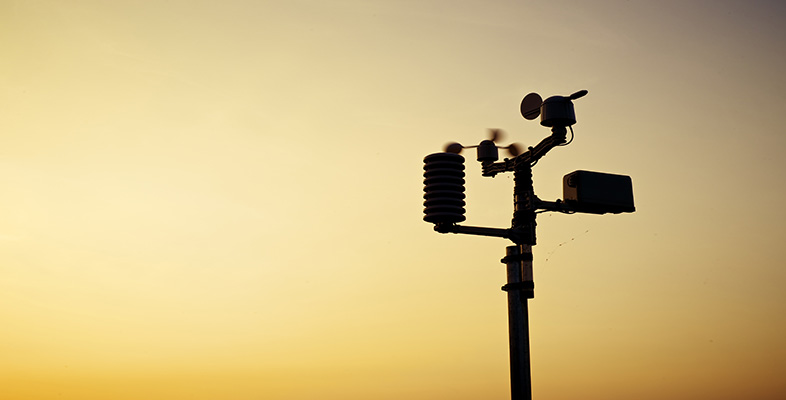2.4 Observing at other frequencies
All of the satellite images you have seen so far, and most that you will find in the image bank, are made using either visible or IR radiation. However, these are not the only frequencies that can be used for meteorological measurements.
Higher frequencies from the blue end of visible light to UV are used to measure and to map gases that absorb in that region of the spectrum, notably ozone. Lower frequencies, including microwaves, also have observational uses. You have already seen that neither visible nor IR radiation penetrates through thick clouds, a fact that can be used to good effect to image cloud tops in the IR. Radiation at lower frequencies is much less strongly scattered by small particles; you would not expect a radio signal to be blocked by clouds or fog. In the microwave region of the spectrum, all clouds, except the thickest cumulonimbus, also appear transparent. A sensor that operates at microwave frequencies can therefore 'see through' clouds and fill in parts of the atmosphere and surface that are invisible to a satellite observing in the IR.
